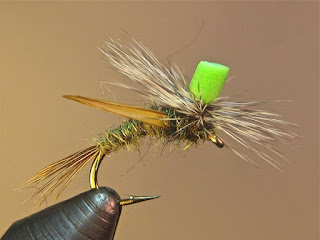DIY Flies
You can buy your flies, if you like, from a sporting goods store, fishing shop, online, or even at Wal-Mart. This is good to begin with, but once you genuinely start off getting into fly fishing as a hobby, you are most likely going to need to try your hand at tying your personal flies at some point.
There are all sorts of books on the market that can teach you how to tie flies. They contain in-depth information for the sophisticated tier. What we’ll do is make an effort to cover just the basics in this section. Following all, fly tying is just a small part of fly fishing, though it is crucial all round.
The very first thing you need to know about tying your personal flies is to know a little bit concerning the flies themselves.
Since dry flies are the most entertaining to use (you get to see the fish take the fly), far more fly patterns happen to be made as dry patterns than any on the rest. Some people separate emerger flies from dries, due to the fact they generally float.
Streamers are flies that represent minnows, crayfish, leaches as well as a variety of other life forms that swim below the surface of lakes and streams. Since fish frequently eat minnows, leaches and crayfish, this really is a crucial type of fly to learn how to tie.
There are all sorts of books on the market that can teach you how to tie flies. They contain in-depth information for the sophisticated tier. What we’ll do is make an effort to cover just the basics in this section. Following all, fly tying is just a small part of fly fishing, though it is crucial all round.
The very first thing you need to know about tying your personal flies is to know a little bit concerning the flies themselves.
Dry flies
Dry flies are just flies that float. They normally represent adult insects that are emerging (breaking out of their nymphal shuck), drying their wings so they're able to fly away, or returning towards the water to lay eggs.Since dry flies are the most entertaining to use (you get to see the fish take the fly), far more fly patterns happen to be made as dry patterns than any on the rest. Some people separate emerger flies from dries, due to the fact they generally float.
Wet flies
Wet flies are simply flies that do not float. They usually represent nymphs and pupae which might be swimming toward the surface on the water or trying to break through the surface film to become adults. Since many insects become lunch menu things during this stage of their existence, it is useful to know how to tie wet flies.Nymphs
Nymphs represent the nymphal or larva stage in an insect’s life cycle. Since insects devote the majority of their life within the nymph or larva stage, this is an essential stage in terms of fish forage. I’ve heard that up to 95 percent of a stream fish’s diet is nymphs and larva in some form. Need I say far more concerning the significance of this type of fly?Streamers are flies that represent minnows, crayfish, leaches as well as a variety of other life forms that swim below the surface of lakes and streams. Since fish frequently eat minnows, leaches and crayfish, this really is a crucial type of fly to learn how to tie.
